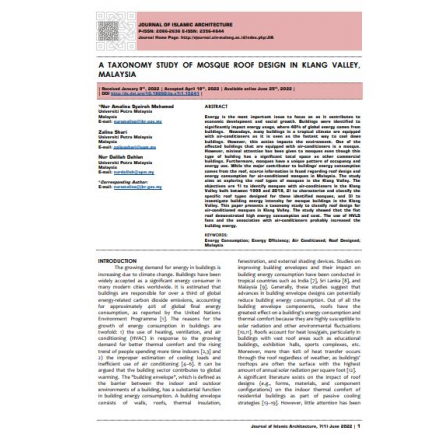
A TAXONOMY STUDY OF MOSQUE ROOF DESIGN IN KLANG VALLEY, MALAYSIA
تاريخ الاضافة
22/07/2022
نوع المحتوى
Documentary
Category
Researches
الرابط للمحتوى
Subject Area
Mosques
الكاتب
Nur Amalina Syairah Mohamed
Zalina Shari
Nur Dalilah Dahlan
الناشر
Journal of Islamic Architecture
Year of Publication
2020
الوصف
Energy is the most important issue to focus on as it contributes to economic development and social growth. Buildings were identified to significantly impact energy usage, where 40% of global energy comes from buildings. Nowadays, many buildings in a tropical climate are equipped with air-conditioners as it is seen as the fastest way to cool down buildings. However, this action impacts the environment. One of the affected buildings that are equipped with air-conditioners is a mosque. However, minimal attention has been given to mosques even though this type of building has a significant total space as other commercial buildings. Furthermore, mosques have a unique pattern of occupancy and energy use. While the major contributor to buildings' energy consumption comes from the roof, scarce information is found regarding roof design and energy consumption for air-conditioned mosques in Malaysia. The study aims at exploring the roof types of mosques in the Klang Valley. The objectives are 1) to identify mosques with air-conditioners in the Klang Valley built between 1998 and 2018, 2) to characterize and classify the specific roof types designed for these identified mosques, and 3) to investigate building energy intensity for mosque buildings in the Klang Valley. This paper presents a taxonomy study to classify roof design for air-conditioned mosques in Klang Valley. The study showed that the flat roof demonstrated high energy consumption and cost. The use of HVLS fans and the association with air-conditioners probably increased the building energy.





